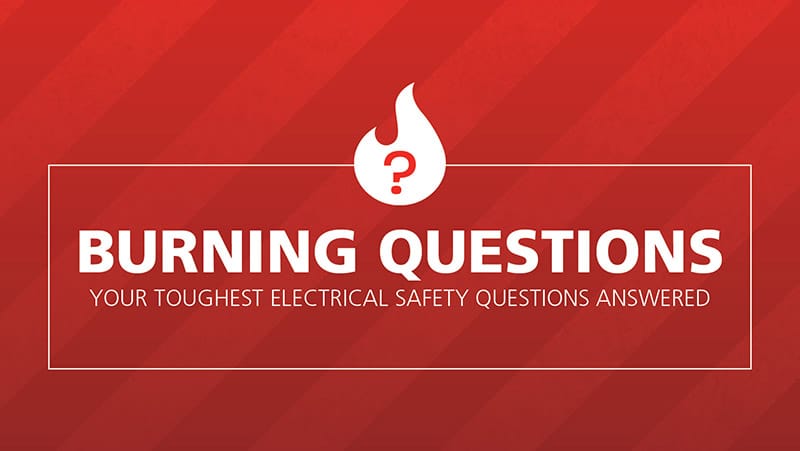Q: Is a vented hard hat acceptable for operators when they operate a circuit breaker or disconnect?
A: NFPA’s 70E Standard for Electrical Safety in the Workplace® views the hardhat, Class G & E specifically, as shock protection.
The NFPA 70E Standard assumes a person will be wearing that type of hardhat when dressing in arc-rated PPE. Typically, a Class E hardhat is part of a hardhat/face shield combination or part of the arc flash hood. When worn from 1.2 cal/cm² or higher or when using PPE Category 2, there is typically a balaclava under the hard hat and that provides additional protection for the worker’s head, greater than 12 cal/cm².
So to answer your question, if energized electrical conductors are exposed when a person operates a circuit breaker or disconnect, then they need to wear a Class E hardhat as part of their shock protection.
In this particular case, it does not matter, in my opinion, if the hardhat is vented or not from the standard’s perspective. Arc flash testing has been done by ArcWear on hard hats and shields with vents on the top with arcs coming from several directions. In no case could we get adequate energy to scorch a cotton t-shirt under the hardhat. The infrared portion of the arc must be line of site and the convection mostly blocked by the aerodynamics. The testing is proprietary to the face shield company.
Many arc ratings have been completed on vented hard caps without any indication of injury, but there are no sensors on top of the mannequin’s head. Additional work displayed in e-Hazard safety training performed by ArcWear shows that most hard hats take more than 50 cal/cm² to ignite unless ignitable garments are under the hard hat.
If energized electrical conductors are not exposed when a person operates a circuit breaker or disconnect, then a person does not need to wear any shock protection. So the type of hardhat is not an issue.


I’m look to buy class G or E Vented hard hat and can not locate any help would be appreciated
ArcWear is a test lab and they must maintain confidentiality of test data unless allowed to release by the manufacturer. However a point of the article is that NFPA 70E allows ALL Class G and E hard hats. There is no standard for arc testing them and no requirement to do so. We at e-Hazard are comfortable that the committee is right based on the current experience of testing. If accidents or testing lead us to believe there is an issue, we will be happy to share a changed state. Good luck finding a good hard hat. Bullard, MSA and many others have properly rated Class E and G hard hats.
Class E hardhats are non-vented. This is to maintain the 20,000 volt electrical rating. They offer Type 1 and Type II protection in Class E (Type I for overhead impact and Type II for side-impact), but no vented options.